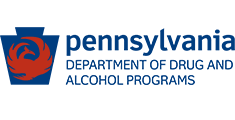The signs, symptoms, and effects of benzo addiction can be different for every person impacted. Learning about benzo addiction is one of the first steps towards getting better.
Understanding Benzos
Learn about benzos and substance abuse
Benzodiazepines are a category of psychoactive substances that are most commonly prescribed to individuals who are struggling with symptoms associated anxiety, panic, and insomnia. Also commonly referred to as benzos, benzodiazepines are central nervous system (CNS) depressants that are also used to treat individuals who have been experiencing seizures or severe muscle pain, or who need medical assistance to manage the symptoms of alcohol withdrawal syndrome.
Examples of commonly prescribed medications that contain benzodiazepines include Valium (which contains diazepam), Xanax (alprazolam), Ativan (lorazepam), and Klonopin (clonazepam). The effects of benzo use include sedation, serenity, and relaxation. While these are beneficial outcomes when the medications are used under the supervision of an effective healthcare provider, they are also enticing effects for individuals who wish to self-medicate or who desire an illicit recreational high. Regardless of what reasons cause a person to misuse medications that contain benzodiazepines, the result can have a profoundly negative impact. In addition to the range of immediate risks that accompany benzodiazepine abuse, the continued misuse of these medications can also lead to the development of dependence. According to the fifth edition of the Diagnostic and Statistical Manual of Mental Disorders, dependence upon benzodiazepines is identified as sedative, hypnotic, or anxiolytic use disorder.
The good news is that, with appropriate professional assistance, many individuals who were once trapped in a downward spiral of benzodiazepine dependence have been able to overcome their compulsion to abuse these dangerous drugs, and have learned to make the other changes that support long-term recovery and a healthy drug-free life.
Statistics
Benzo addiction statistics
Medications that contain benzodiazepines are among the most commonly prescribed medications in the United States, with more than 50 million prescriptions for these drugs being written every year. According to the National Center for Biotechnology Information, a study that evaluated data from 2008 revealed that 5.2 percent of U.S. adults ages 18 to 80 received a benzo prescription during that year, with women receiving benzo prescriptions at about twice the rate that men did.
According to data collected by the Drug Abuse Warning Network (DAWN), more than 30 percent of drug-related visits to hospital emergency rooms are related to the abuse of a benzodiazepine. The American Psychological Association reports that the 12-month prevalence of sedative, hypnotic, or anxiolytic use disorder is 0.2 percent among adults in the United States.
Causes and Risk Factors
Causes and risk factors for benzo addiction
A person’s risk for abusing benzodiazepines or developing a sedative, hypnotic, or anxiolytic use disorder involving a drug from this category can be influenced by several factors, including the following:
Genetic: The American Psychological Association notes that genetic factors play a strong direct and indirect role in the development of sedative, hypnotic, or anxiolytic use disorder, with the genetic predisposition to this problem becoming more apparent as individuals pass through adolescence and into adulthood.
Environmental: A crucial environmental risk factor for the abuse and potential dependence upon benzodiazepines is access and availability. As noted above, medications containing these substances are widely available via prescription in the United States. This widespread use means that the drugs can also be obtained illicitly through borrowing, theft, or fraud.
Risk Factors:
- Early use of benzodiazepines
- Impulsivity or novelty-seeking temperament
- Being female
- Having alcohol use disorder
- Having access to benzodiazepines
Signs and Symptoms
Signs and symptoms of benzodiazepine addiction
The following signs and symptoms are among the more common indicators that a person may have been abusing benzodiazepines or may have developed sedative, hypnotic, or anxiolytic use disorder:
Behavioral symptoms:
- Lying or being otherwise deceptive about activities
- Using prescribed medications contrary to the prescribing physician’s directions
- Visiting several doctors in attempt to get multiple prescriptions
- Borrowing or stealing medications
- Withdrawing from family and friends
Physical symptoms:
- Blurry vision
- Slurred speech
- Coordination and motor skill problems
- Irregular breathing
- Irregular heartbeat
- Tremors in hands
Cognitive symptoms:
- Confusion
- Retrograde amnesia
- Nightmares
- Poor judgment
- Problems focusing or concentrating
- Diminished inhibitions
- Paranoia
Psychosocial symptoms:
- Mood swings
- Irritability
- Anxiety
- Depression
- Inability to experience pleasure
Effects
Effects of benzo addiction
Chronic untreated benzodiazepine abuse can lead to a wide range of negative outcomes, including the following:
- Problems with memory and concentration
- Confusion and disorientation
- Sleep disruptions
- Vision problems
- Family discord, including separation or divorce
- Damaged or destroyed interpersonal relationships
- Poor job performance, possibly leading to job loss and unemployment
- Financial distress
- Legal problems, including arrest and incarceration
- Depression
- Withdrawal and isolation
- Self-harm
- Suicidal ideation
- Suicide attempts
Co-Occurring Disorders
Benzo addiction and co-occurring disorders
Individuals who have developed a sedative, hypnotic, or anxiolytic use disorder involving benzodiazepines may also be at an increased risk for experiencing the following co-occurring mental health disorders:
- Anxiety disorders
- Bipolar disorder
- Depressive disorders
- Posttraumatic stress disorder (PTSD)
- Schizophrenia
- Other substance use disorders







